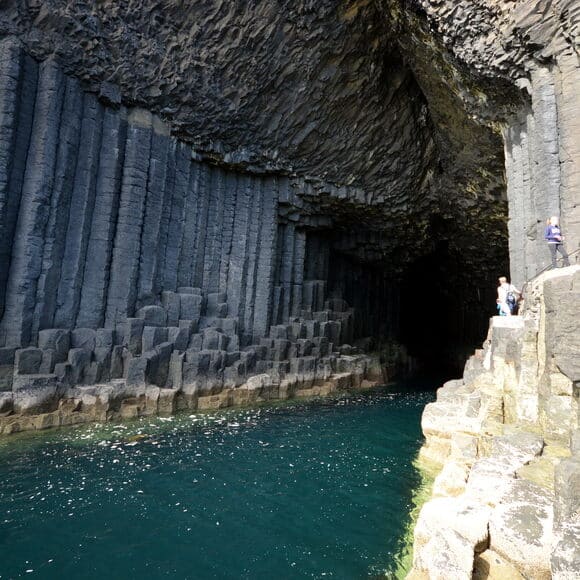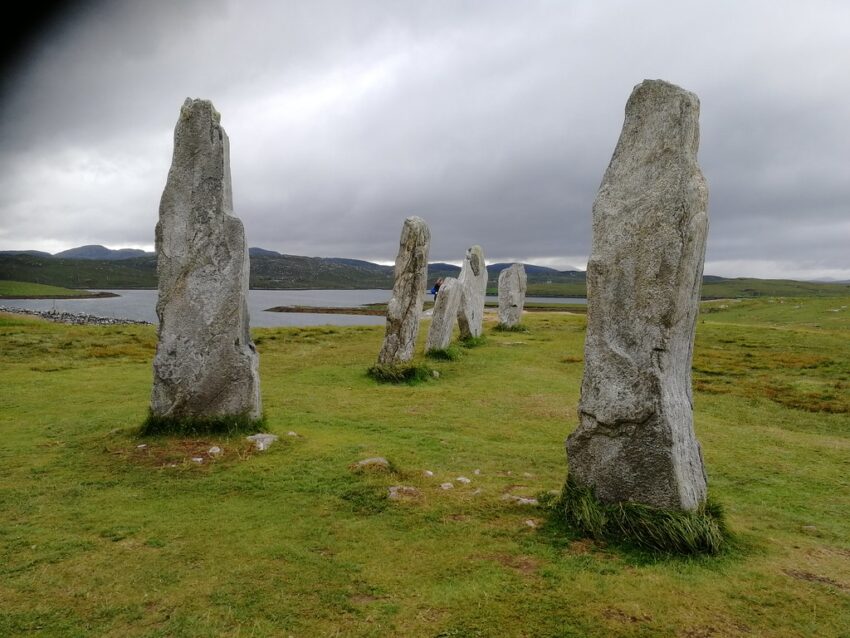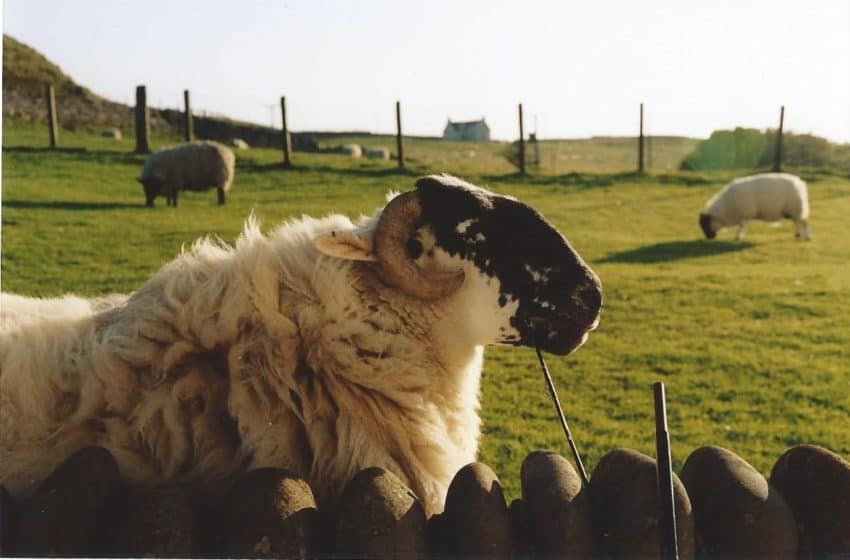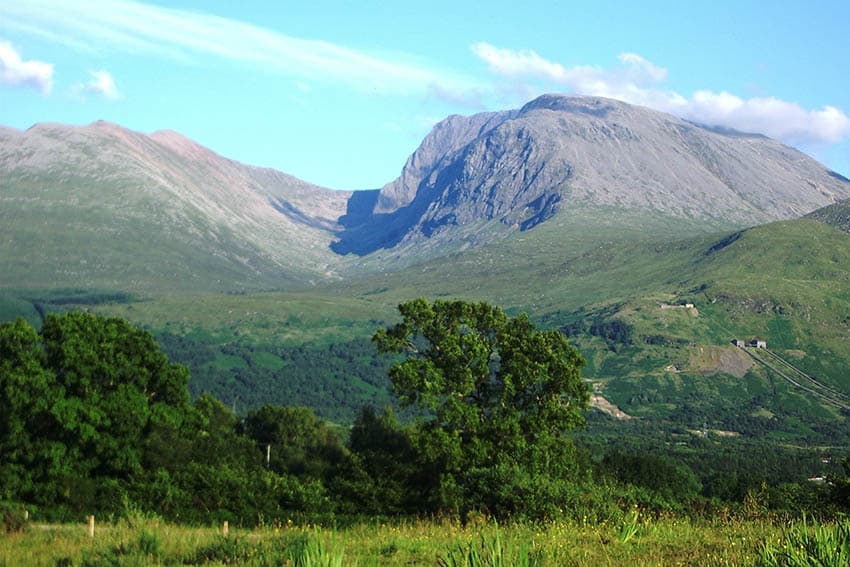
Inner Hebrides Isles: Searching for Puffins and Basking Sharks
By Matteo Preabianca
When people visit Scotland, they are more interested in whiskey, Harris Tweed, haggis, and Edinburgh Castle than anything else. But few foreigners know that the Highlands and the Western Isles are packed with wildlife. My trip to the Inner Hebrides was about exploring some of those islands, in search of puffins and basking sharks.

My trip started on the Isle of Lewis and the Isle of Harris: the main island of the Outer Hebrides. The name is misleading because it is only one island, but since there is a mountain range that divides Harris, the southern and smaller part, from the northern and more extensive Lewis — the range of high mountains prevented land access in the past between Lewis and Harris, turning them into virtually separate islands for the people who lived there.
The territory of the island is harsh and desolate, but it is an excellent base for excursions to the surrounding smaller islands.
How to Get to Lewis and Harris
If you start from one of Scotland’s main cities, Glasgow or Edinburgh, the best way is to take a bus or train to Inverness (about 3 hours), then another bus to Ullapool (1 hour and a half) and finally the ferry (2 hours and a half) to Stornoway, the capital of the Outer Hebrides. It’s not easy reaching these islands!
As soon as I got off the ferry, I had my first encounter with local tradition. It was Sunday and usually, nothing happens here because an important part of the population is religiously conservative Presbyterian. It was the Sabbath, a church day.
English and Gaelic
In fact, there was an old man at the pier, with a sign written both in English and Gaelic, in which he strongly expressed his opposition to the Sunday ferry. Gaelic is the Hebrides language, along with English.
This a small example of how this place is so different from mainland Scotland.
Lewis is mostly flat, with miles of soggy ground all along the center of the island. Similar to an Icelandic moon-like landscape. But around the coast, plenty of sandy beaches, rocky cliffs, and the deep waters of Loch Suaineabhal.
Going down to Harris, the landscape changes again, with panoramic views down to lochs, more sandy beaches, and coastal inlets.
Historical Places and Gaelic Language
One of the main attractions is the Neolithic standing stones at Callanish. They are older and better kept than Stonehenge. Other places worthy of a visit are Dun Carloway Broch (Iron Age era) and the traditional 19th-century blackhouse villages at Arnol and Gearrannan.
The islands hold their traditions close, like the Gaelic language which is still alive and spoken. You can also see it on signs around the Outer Hebrides. If you are interested in learning more about its tradition but also local modern art, film, and photography on show, Lanntair arts center in Stornoway is the place to go. It is here I have my second encounter with Gaelic speakers.

Two old ladies chatted using their native language. I decided to try my luck and using my one year of Gaelic study, I could say a few words to them. The ladies were amused by my effort, not because my Gaelic skills are amazing (I am pretty terrible at it) but because an Italian guy who speaks a bit of Gaelic does not happen that often around here.
Not only Seals
The local wildlife sounded promising: in a full day, I saw red deer, plus seals, dolphins, porpoises, and one whale. The day after I went to the North Harris Eagle Observatory, at the end of the Bird of Prey Trail in Harris, to spot eagles. I sat there for three hours, honestly a bit bored because there was nothing else to entertain myself, but no eagles came.

I was looking for basking sharks. This second-largest shark in the world has its biggest hotspot right here, among the Scottish Western Isles. Till 1994, these sharks were hunted in Scotland. Their large livers contain a vast amount of oil. This oil was used in lamps, cosmetics, and perfumes.
This kind of shark is not dangerous at all. They do not attack humans or big mammals because their teeth are relatively small, just for eating plankton. It is not very easy to see them. In fact, I didn’t see them at all on the Isle of Lewis. So I decided to move South to the Isle of Skye.
How to get to the Isle of Skye
A wild and dramatically beautiful island, Skye can be reached from Lewis and Harris from the town of Tarbert by a 40-minute ferry to the small town of Uig on Skye. The island is known in Gaelic as Eilean a’ Cheò – the “Misty Isle” — because rainfall is generally high.

Compared to the previous island, Skye is busier with tourists. On every corner, there are camper vans and tents because it is hard to find an ugly place on Skye. It is worth mentioning too that there are a lot of ‘glamping’ pods available on the island if you do not want to spend a lot of money on basic accommodation. It is not a cheap place.

After a quick tour of Portree, the main town and hub of the island, I rented a car to go to Elgol, a little fishing and crofting village. It is a bit of a challenge to reach the village because the streets are narrow, not always well paved, and full of sheep.
Elgol: Will I See Some Sharks?
The tiny pier faces a small bay not too shallow, not too deep. An ideal place for basking sharks. I stared at the water for an afternoon. No sharks. The day after I joined a boat trip around the bay. A lot of seals, and some porpoises but, again, no sharks. I decided to give up, but I had the feeling that I needed to apply my usual “rule of three”: trying something three times, regardless of the result.
I woke up early on the third day, taking a private boat, and asking the owner to drive very gently, to reduce the engine noise as much as possible. Four hours back and forth, doing the same circle over and over. Finally, I saw a fin, an enormous 1-meter fin. We were getting closer and closer, aware that the shark can swim away quickly, but another shark appeared. I leaned out from the boat, stupid, reckless.
I could see all the body shapes of the shark on the verge of the water’s surface. It was a massive fish. A bit scary, but it moved so smoothly that I did not even have the time to realize that. A few seconds well impressed unto my mind, like hours of watching. See the sharks? Done!
Some Skye Attractions
I could leave the island now, but I took the advantage of seeing the most iconic places in Skye: the large pinnacle of The Old Man of Storr, a 75-minute walk up and back down; the fairy pools, where I dared to swim a bit before my body got frozen, and Dunvegan Castle where they do not serve vegan food, as an American tourist asked me.
If you like drinking alcohol, the Skye Distillery produces its own gin, and Talisker Distillery on the west coast produces great whisky. It was time for me to move to my next destination.
Inner Hebrides Oban and the Isle of Mull

To reach my third and last destination from Skye, I had to wake up early and take the 7:30 am bus which took me to Fort William first and then to Oban, a resort town in the Argyll area.
Apart from Dunollie Castle and its lovely surrounding walk and McCaig’s Tower, whose nickname is The Little Colosseum, the town is not very interesting, but it is another good base for trips around the nearby isles.
The day after I took a 45-minute ferry to Craignure on the Isle of Mull (probably the only worthwhile wild place to visit here is Ben More, the only island Munro outside Skye) and a short ride bus to Tobermory, where I booked a day trip with Staffa Tours company.
This was a 6-hour tour of Treshnish and Staffa islands. A fun fact: I usually find a Chinese, Indian, and Italian restaurant in each Scottish city and town I have visited, but there are no Italian meals here in Tobermory!
Lunga Island: where the Puffins welcome people
The first island is called Lunga, part of the small archipelago of Treshnish Isles. It’s about an hour away from Tobermory by boat, and it is guaranteed I would see puffins there. “How is it 100% possible that I can see puffins?” I asked myself.
The answer was fantastic: here, puffins do not mind the human presence, because we scare away other birds, especially seagulls, and these cute little birds can pop up and fish peacefully.

And it is really true. Once I am there, it was only a matter of minutes before the first shy puffin came out from its burrow and stared at me. Not the other way around. I sat on the grass, about one meter away from their burrow, in order not to bother their eggs and pufflings, and the show started: a fleet of puffins flying and hopping around.
I manage to take several photos of them without much effort. This clever bird does not make its own nest on Lunga, it just kicks rabbits out of their burrows.
Not only puffins are around here. For bird lovers, I spotted shags, Manx shearwaters, razorbills, and thousands of guillemots. I saw a shearwater nesting beneath a rock, it looked quite aggressive, so I needed to divert my walk.
Staffa Island: Puffins, Music, Poems
The second island I visited, Staffa, has puffins but not as many as on Lunga. The main attraction is Fingal’s Cave, a sea cave. It became famous thanks to the poet James Macpherson who wrote a cycle of poems in which the protagonist is called Fingal.
Mendelssohn, the German musician, also composed The Hebrides Overture inspired by his trip to the cave. In fact, before getting off the boat, the tour guide played this overture while we were standing right in front of this magnificent cave. It seems silly but it did give us an impressive feeling.
It is possible to visit the cave via a short walk. A row of fractured columns forms a walkway permitting exploration on foot. There is a safe handrail planted in the rock. What struck me most about this place is the so-called rock conglomerate: it looks like it was designed by an architect. So precise and rectangular.
It was finally time to leave the island. On the way back, besides the “usual” encounter with seals and porpoises, thanks to my guide who decided to approach another island, the Isle of Coll, I got a chance to see a white-tailed eagle, relaxing on a tree branch. I could not see it clearly, but better than nothing. Once again Mother Nature does not fail to amaze me in Scotland.

Matteo Preabianca has been traveling for more than 10 years, living in several countries, including Italy, UK, Switzerland, Russia, India, USA, Australia, Mali, Mexico, and now, China, where he works as a University Lecturer.
- Camino Tales: Wine and Memories in Galicia, Spain - July 25, 2024
- Beluga Hunting in Norway - July 20, 2024
- Costa Rica: A Rainforest Chocolate Tour - July 18, 2024




